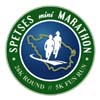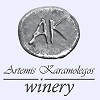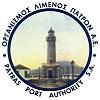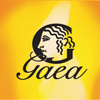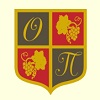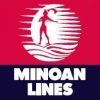Lecture on the Antikythera Mechanism
Seminar by Prof. John H. Seiradakis
17 March 2014 at 15:00, Room 11, Amphitheater, Bldg. 58
View the whole Lecture (accessible only through the JRC IntraNet)
alternative link for IE or FF
The foundations of modern science have their roots in ancient Greece. An example of the pioneering role of Greece in the scientific progress is the, in 1901 in an ancient shipwreck just outside the isle of Antikythera discovered, ‘Antikythera Mechanism’, a unique Greek geared device, constructed around the end of the 2nd century B.C. Prof. Seiradakis is going to take us to a journey through the discovery, and the scientific work performed to understand the purpose and technical sophistication of this fascinating device.
The Antikythera Mechanism: Discovery – Techniques - Research - Applications
Prof. John H. Seiradakis, PhD
Aristotle University, Department of Physics, Laboratory of Astronomy, GR-54124 Thessaloniki, Greece
The Antikythera Mechanism was a portable (laptop-size), geared mechanism, built ca. 150–100 BCE, which calculated and displayed, with high precision, the movement of the Sun and the Moon on the sky and the phase of the Moon for a given epoch. It could also predict eclipses and calculate the dates of the Olympic Games. It had one dial on the front and two on the back. Its 30, precisely cut, gears were driven by a manifold, with which the user could select, with the help of a pointer, any particular epoch (at the front dial). While doing so, several pointers were synchronously driven by the gears, to show the above mentioned celestial phenomena on several accurately marked annuli. It contained an extensive user’s manual. The exact function of the gears has finally been decoded and a large portion of the manual (~3000 letters) has been read after 2000 years by a major new investigation, using state of the art equipment.
No complicated geared instruments are known before the Antikythera Mechanism and for several centuries after. Therefore, this astronomical device stands out as an extraordinary proof of high tech in ancient times.
About Prof. John H. Seiradakis
John Hugh Seiradakis was born in Chania, Crete. He obtained his degree in Physics from the University of Athens. His postgraduate studies were undertaken at the Victoria University of Manchester (Jodrell Bank): M.Sc. (1973) and Ph.D. (1975).
From 1975 to 1985 he worked as a Post Doc researcher at the Max-Planck-Institute for Radio Astronomy, Bonn, Germany, at the University of Hamburg, Germany and at the University of California, San Diego (UCSD), U.S.A. In 1985 he was elected as Associate Professor at the Aristotle University of Thessaloniki, Greece and in 1996 as full Professor, a position that he holds until today.
His major scientific interests in Astronomy focus on neutron stars (pulsars), neutral hydrogen modelling in nearby galaxies, the centre of our Galaxy, flare stars, the Moon and Archaeoastronomy. He has written 3 course books and has published more than 100 articles in refereed (mainly) and other scientific journals, volumes or conference proceedings. He has also written popular astronomy books and published a few tens of articles in newspapers or popular magazines.
He has supervised PhD Theses, has participated in several international conferences and represented Greece in international resolutions. He has also participated in or chaired several Evaluation Committees of research projects or programmes and represented Greece in large European networks (OPTICON, ILIAS, CRAF, etc).
He is the Director of the laboratory of Astronomy of the Aristotle University,
In December 2005, the highest EU prize Descartes was awarded to the neutron stars research network, PULSE, in which he is a one of the founding members.
He is a member of the Antikythera Mechanism Research Group. Since 2005, he has given more that 100 lectures, public or scientific, in Greece and around the world for the Antikythera Mechanism.
Finally he has served as Member, Chairman or Director in several Committees in the University of Thessaloniki. He is a Member in several national or international scientific organizations. He has served as Member, Secretary or Chairman of the Greek National Committee for Astronomy and Secretary or President of the Hellenic Astronomical Society.







